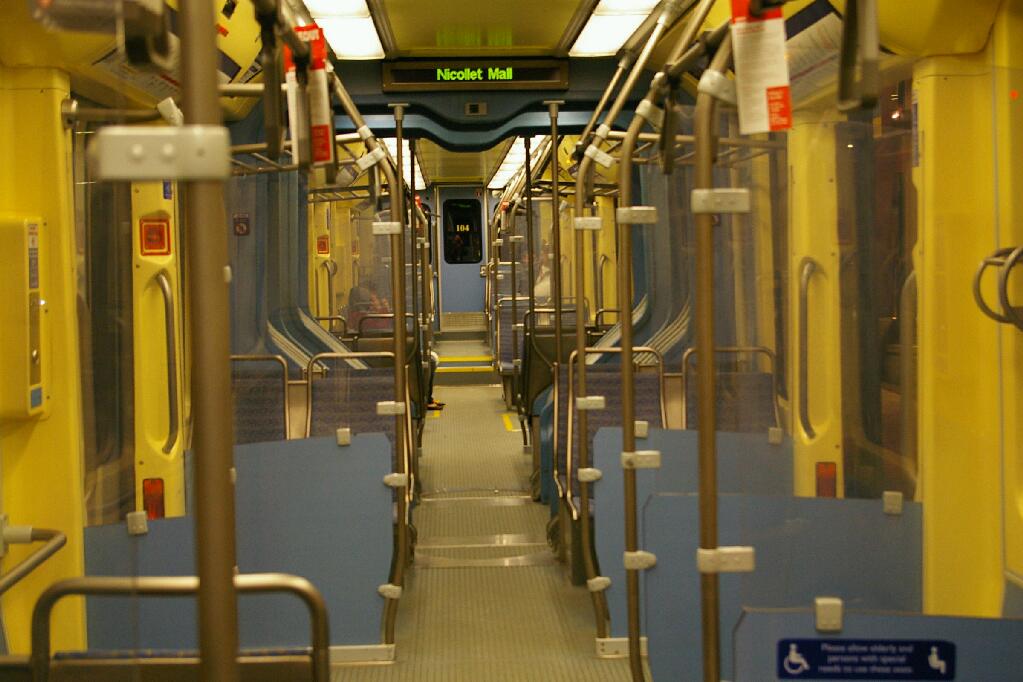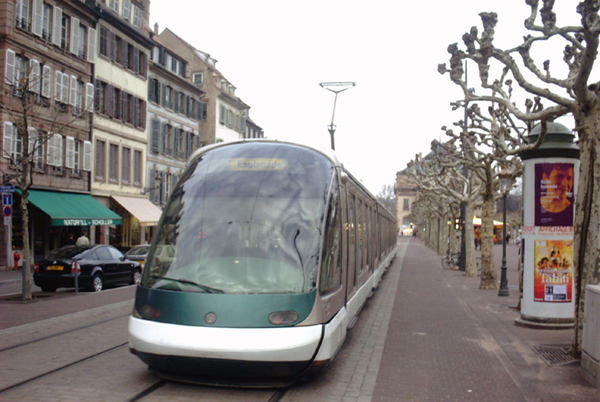Low floors will give bumpy ride, new bidder for streetcars says
Partial low-floor design would be better, Dusseldorf-based manufacturer advises TTC
JEFF GRAY
November 9, 2007
Toronto is taking a risk on an unproven technology for its next generation of streetcars that would make for a bumpier ride and more breakdowns, according to a new competitor for the up-to-$1.4-billion contract.
The Toronto Transit Commission and other firms bidding for the contract insist that the ground-hugging "100-per-cent low-floor" design specification is reliable and will be better for all passengers, including the disabled.
With an eye on the TTC's expected demands for Canadian content, Dusseldorf-based Vossloh Kiepe is to announce today that it is teaming up with auto and bus parts manufacturer Martinrea International Inc., based in Vaughan, Ont., to compete for the contract. Other firms that have expressed interest in building 204 light-rail vehicles to replace the TTC's current iconic fleet include Montreal's Bombardier, Germany's Siemens, Czech-based Skoda and the French firm Alstom.
The winner may be called upon to build even more new vehicles if the city's ambitious light-rail expansion plans go ahead.
Peter Maass, president of Vossloh Kiepe's Canadian arm - which has only a handful of employees, says the TTC's recent decision to restrict the competition to designs for 100-per-cent low-floor vehicles is a bad move, because the new technology is unreliable and produces a much bumpier ride since passengers are closer to the ground.
"It is the roughest ride. When you are standing or sitting in it, you are getting this jarring right up your spine, like you wouldn't believe," Mr. Maass said in an interview, adding that some cities in Europe are going back to partial low-floor designs. "... You feel like you are getting tossed around in the vehicle."
Adam Giambrone, chairman of the TTC, said 100-per-cent low-floor cars he has ridden offered a smooth ride, with the exception of one in Helsinki, where he believed the track system may have been partly to blame.
"I have ridden low-floor streetcars all over the world. ... All of them were perfectly comfortable," Mr. Giambrone said.
TTC engineers believe the 100-per-cent low-floor cars are better for passenger flow, and because they lack stairs, reduce the chances of customers tripping on board. They have also concluded that, while the design will be challenging, 100-per-cent low-floor cars may actually be better on the system's unusually tight turns, and less likely to derail than partial low-floor vehicles.
Mr. Maass said his firm will offer the TTC a completely low-floor vehicle if asked, but will try to persuade the transit agency next week to allow it to bid with a 70-per-cent low-floor car based on one it helped build for the German city of Leipzig.
Partial low-floor vehicles use traditional light-rail technology, raised like the current TTC fleet at the front and back, but with a lower middle section for disabled passengers to board.
To make the entire car low-floor means making its propulsion system and other components much smaller, Mr. Maass said, requiring "experimental" technology that can break down. He added that getting such a radical new design to work on the TTC's tracks, which have extremely tight turns and steep hills compared with many European systems, will be an added challenge.
Certainly, Siemens - considered one of the front-runners for the TTC's streetcar deal, along with Bombardier - has had many problems with its 100-per-cent low-floor light-rail vehicles in Europe in recent years, after it emerged that the streetcars' frames were cracking from the strain of the new design.
The debacle with the firm's Combino model - forerunner of the modified Combino Plus that it intends to offer Toronto - forced the German transportation giant to recall hundreds of light-rail vehicles from European cities over the past five years, costing it as much as $500-million.
Mario Péloquin, Siemens director of business development for Canada, said the Combino's problems has been solved, and he strongly denied the charge that low-floor technology is flawed.
"... It is proven technology," he said in an interview, adding that the trend is clearly toward 100-per-cent low-floor vehicles.
Mr. Péloquin disagreed that the cars give a jarring, bumpy ride: "As a passenger, you can feel more what's happening on track below the train. But I wouldn't say it is bumpy. There's been a lot of technological advancements."
Bombardier Transportation vice-president Mike Hardt also stood by the 100-per-cent low-floor design, which his firm plans to offer the TTC.
Bombardier was embroiled in a controversy during the last major TTC purchase, when the transit agency made a $674-million deal with the firm to build 234 new subway cars without accepting bids from other companies to protect jobs at Bombardier's Thunder Bay plant. This time, the TTC is accepting bids, but may include Canadian-content provisions.












